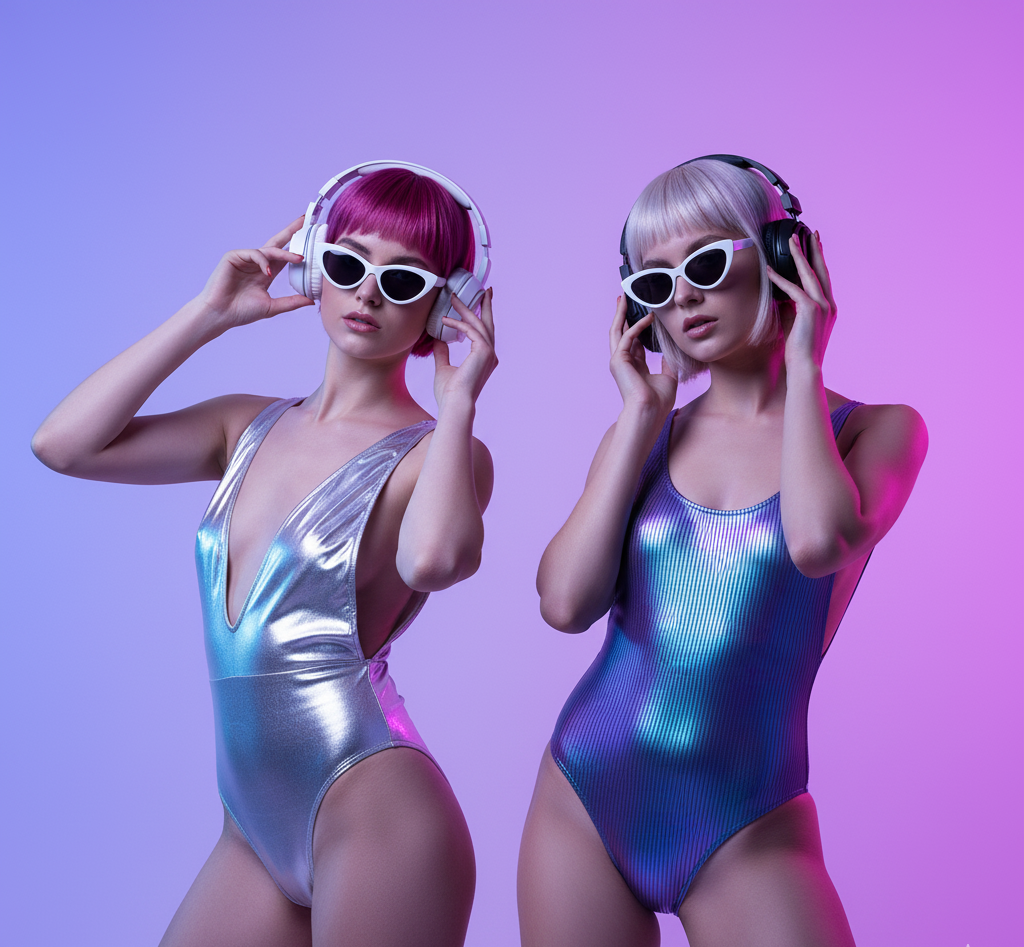Denim is one of the rare textiles that has transcended centuries, class divides, and countless fashion eras. From the gritty workshops of 19th-century laborers to the glossy pages of high-end fashion editorials, denim has journeyed far beyond its utilitarian roots. Once known solely for its rugged durability, this indigo-hued fabric has evolved into a symbol of rebellion, a blank canvas for creativity, and a wardrobe staple across cultures and lifestyles.
But what happens when a classic begins to feel too familiar? In recent years, designers, artists, and fashion-forward individuals have taken denim beyond the ordinary—reinventing its structure, function, and purpose. This essay explores how denim is being reimagined today: not just updated, but radically transformed—from silhouette to sustainability, from runway to street, from vintage homage to futuristic reengineering.
A Legacy Rooted in Function
Before we dive into modern reinvention, it’s important to understand denim’s origin. Denim as we know it was born in the 1800s, developed as a durable fabric for miners, cowboys, and railroad workers. The tightly woven cotton twill, with its diagonal ribbing, was resistant to wear and tear. When Levi Strauss introduced riveted denim pants in 1873, they quickly became essential workwear.
But even as the fabric served practical needs, it quietly gained cultural weight. By the 1950s, denim had been adopted by youth subcultures—from James Dean’s brooding teenagers to punk and grunge movements of the late 20th century. Denim became a code for rebellion—a uniform for those questioning societal norms.
Today, that same spirit of disruption is being used to redefine denim’s very identity.
Deconstruction as Reinvention
One of the most striking trends in denim’s modern evolution is deconstruction. Designers like Maison Margiela, Yohji Yamamoto, and smaller avant-garde labels are pulling denim apart—both literally and conceptually.
Rather than a traditional pair of jeans, you might find a denim blazer with frayed hems, an asymmetrical midi skirt crafted from old Levi’s, or patchwork denim trousers with contrasting panels stitched together like a textile collage. These pieces challenge the notion that denim must be flat, uniform, or even symmetrical.
Deconstruction is more than an aesthetic—it’s a philosophical rejection of perfection. The raw edges, uneven cuts, and visible seams remind us that imperfection is not only acceptable but beautiful.
Sculptural Silhouettes: From Function to Form
While denim has historically been associated with straightforward silhouettes—jeans, jackets, and overalls—modern interpretations are embracing sculptural and architectural forms.
High fashion houses are now shaping denim into balloon-sleeved blouses, tiered ruffled skirts, wide-leg cargo pants, and even structured corsets. Instead of merely following the body’s natural shape, these garments experiment with volume, proportion, and spatial relationships.
This shift reflects a broader change in how we view denim. No longer relegated to “everyday wear,” it’s now a tool of artistic expression, capable of holding shape and commanding attention. Whether it’s oversized denim trench coats or puff-sleeved denim dresses, the fabric is now being used to make a statement—not just to blend in.
The Rise of Non-Traditional Washes and Colors
Blue will always be denim’s signature hue, but today’s designers are embracing the entire spectrum.
We now see denim in dusty pastels, moody earth tones, acid neon, and even pristine white. Tie-dye, dip-dye, bleach splatters, and multi-tone paneling have all become mainstream methods of reinventing denim’s surface. These techniques reflect an openness to reinterpret tradition, moving beyond indigo while still honoring its legacy.
Black denim, once relegated to punk and goth subcultures, has now entered the realm of chic minimalism. Meanwhile, green, burnt orange, and marbled gray add seasonal freshness to denim collections, expanding its stylistic range across different climates and contexts.
Sustainability: Reinvention with Purpose
Perhaps the most crucial aspect of denim’s reinvention lies in its ecological transformation.
Traditional denim production is notorious for its environmental impact, including excessive water usage, chemical-heavy dyes, and unsustainable farming practices. But today’s innovators are rewriting that narrative.
Upcycling: Brands like E.L.V. Denim and BODE use discarded jeans to craft new garments, embracing zero-waste ideals.
Eco-Friendly Dyes: Natural dyes made from plant sources are replacing harmful chemical treatments.
Alternative Fibers: Organic cotton, hemp, and even recycled plastics are being woven into denim, offering more responsible alternatives.
Waterless Technology: Companies like Levi’s have introduced Water<Less™ techniques, which dramatically reduce water use during washing and finishing.
This eco-conscious reinvention reflects a broader movement in fashion—one where aesthetics and ethics must coexist.
Gender Fluidity and New Fits
The age of gendered denim is fading. Where once “men’s” and “women’s” jeans occupied strictly divided spaces in retail and design, today’s denim is increasingly gender-fluid.
Unisex and androgynous fits—like wide-leg jeans, oversized jackets, and boiler suits—are becoming the norm. High-waisted styles that once belonged to women’s fashion are being embraced by all genders. Likewise, baggy, slouchy silhouettes from menswear are now found in women’s collections.
This shift represents denim’s new cultural role: not just a fabric of resistance, but a fabric of liberation. As the barriers between masculine and feminine blur, denim provides a comfortable, expressive space to explore identity without rigid rules.
Denim in Unexpected Places
Denim is no longer limited to pants and jackets. Today’s fashion landscape sees denim manifest in nearly every imaginable form:
Footwear: Heeled boots, sneakers, and slides wrapped in denim.
Bags: From tote bags to structured clutches made entirely of upcycled jeans.
Accessories: Scrunchies, hats, and chokers crafted from leftover denim scraps.
Formalwear: Structured blazers, tailored suits, and even wedding dresses built from indigo threads.
This expansion challenges outdated ideas of denim as “casual” or “informal.” It’s now integrated into every tier of the fashion hierarchy—from streetwear to couture.
Cultural Mashups and Global Influences
Modern denim isn’t just reinvented in form—it’s also being reimagined culturally. Designers from across the globe are fusing denim with traditional textiles and techniques:
Japanese artisans blend denim with boro patchwork and sashiko stitching.
Indian designers mix denim with block-printed cottons and kantha embroidery.
African-American designers like Kerby Jean-Raymond (Pyer Moss) and Telfar are using denim to comment on race, class, and historical representation.
This cross-cultural evolution reflects denim’s new identity as a global language of fashion—capable of telling a million different stories depending on who wears it, and how.
Final Thoughts: Denim as Futureproof Fashion
Denim’s reinvention is not a rejection of its past but a celebration of its adaptability. From blue-collar workwear to haute couture, denim has always evolved in response to cultural and social change. What makes this current wave of innovation different is its scale and scope: it’s not just about style—it’s about sustainability, inclusivity, experimentation, and storytelling.
Today’s denim is not satisfied with staying in its lane. It wants to be deconstructed, re-colored, upcycled, gender-neutral, and globally inspired. It demands to be polished without perfection, edgy without effort, classic without cliché.
Denim may be timeless—but that doesn’t mean it can’t be transformed. In fact, that’s the reason it has endured: because it is not one thing. It’s a fabric of reinvention.



